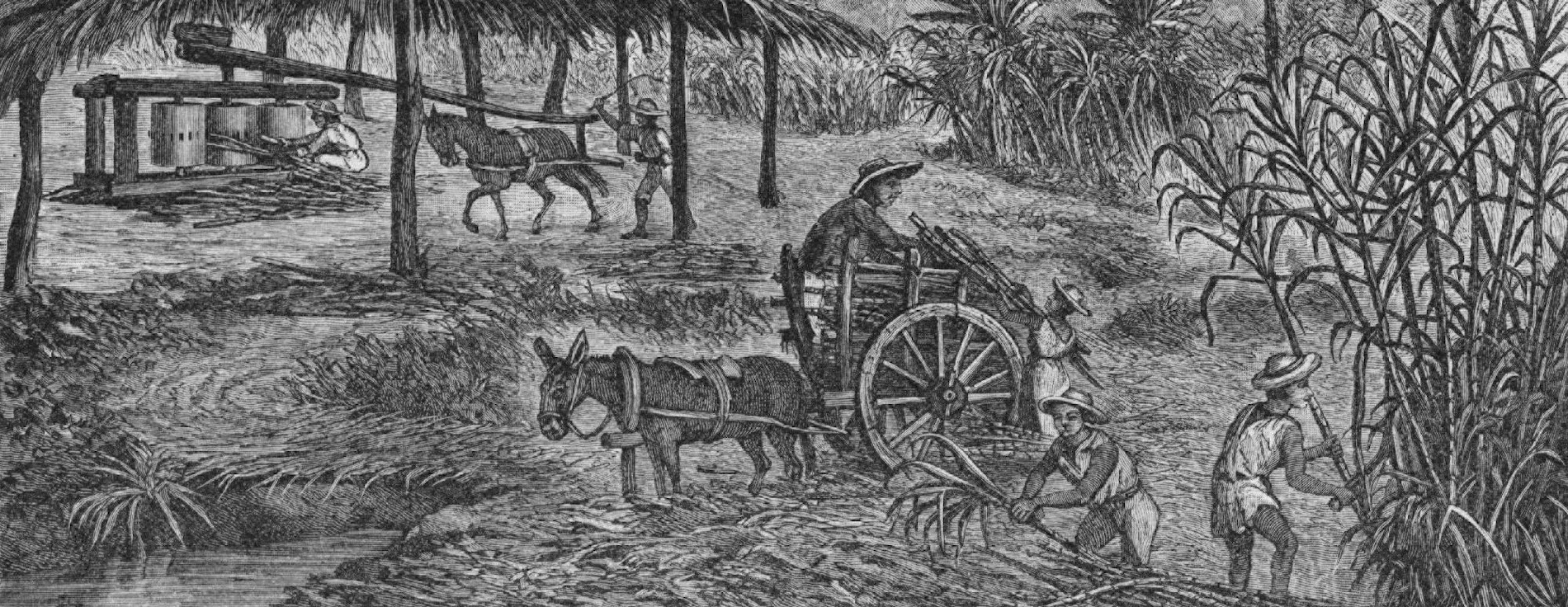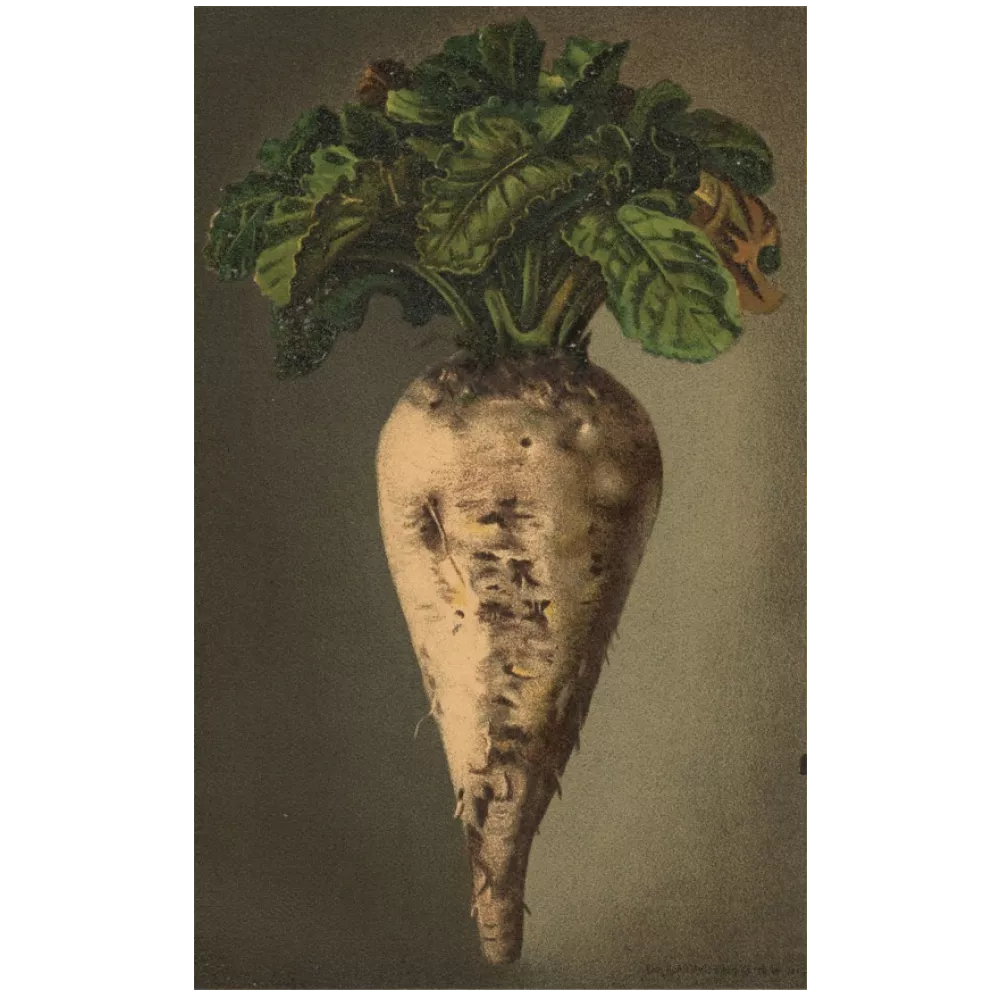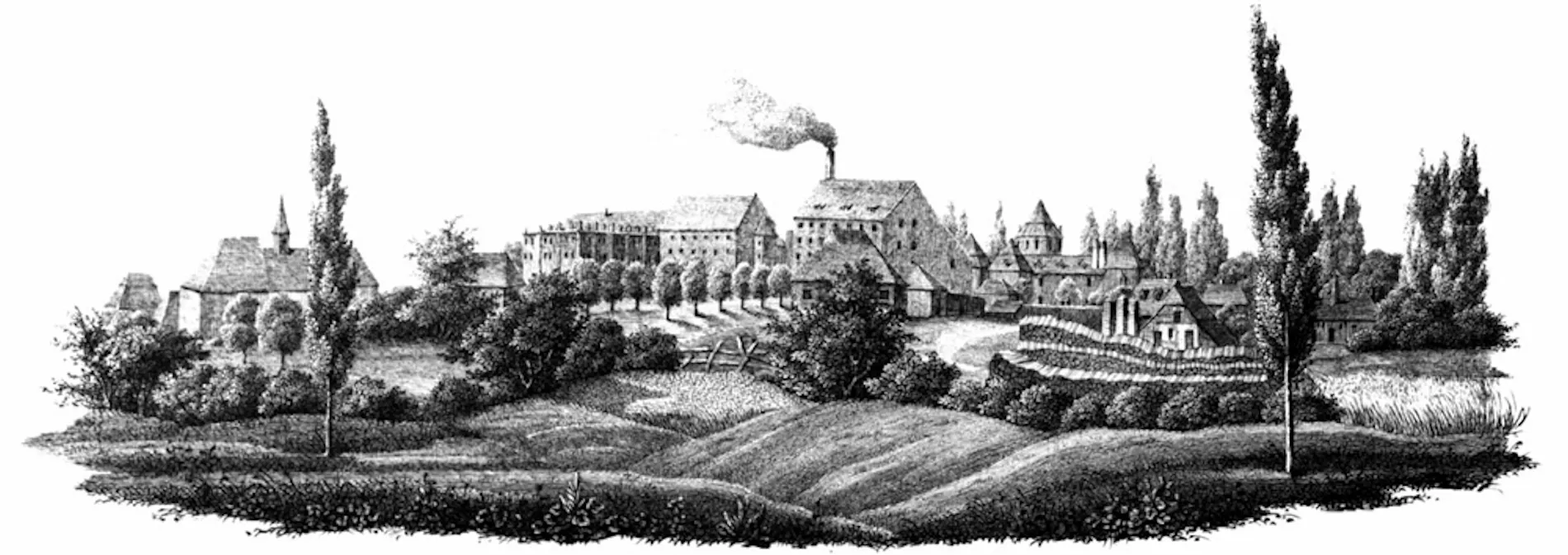History of sugar
Sugar cane and the beginnings of sugar production

The origin of the German word Zucker leads to India, as do the first evidences of using sugar cane for sweetening. The word’s origin is the Old Indic śárkarā, which firstly designated anything ground or grainy and was then transferred to the dry, granular mass of sugar. If you consider the further development towards today’s term, it seems that you trace the way of cane sugar to Germany.
By the Indian campaign of Alexander the Great, the Old Indic word entered the Greek language and became sakcharon where the Latin term saccharum derived from. Likewise borrowed from the Old Indic was the Arabic word sukkar, which came to Spain and Sicily with the Arabic reign in medieval times and thus entered the Romance languages such as Spanish (azúcar), French (sucre and the derived English word sugar) and Italian (zucchero). Through the sugar trade from Venice both sugar itself and its name finally came to Germany where the Italian zucchero turned into the German word Zucker.
From 8000 BC
Sugar cane spreads to India and Persia from New Guinea.
327-325 BC
Through the Indian campaign of Alexander the Great, sugar cane comes to be known in ancient Europe.
600 AD
In Persia, a method for extracting sugar from sugar cane is developed.
About 650-750
Through Arabic campaigns of conquest, sugar cane reaches Cyprus and Sicily and is cultivated there. Later on, sugar cane is also grown in Spain.
As from 1096
During the First Crusade the crusaders from Central Europe get to know the sugar cane and acquire the methods of sugar production. For the first time, sugar reaches Europe on a regular basis, with Venetian merchants dominating the sugar trade until about 1500.
15th century
Sugar cane is also cultivated on the Azores and Canary Islands.
1492
Through his expeditions, Columbus brings the sugar cane to the New World and hence lays the foundation of cane sugar industry on the American continent.
1573
In Augsburg the first German sugar refinery is built, further ones are built shortly afterwards.
17th/18th century
England, France and the Netherlands dominate the sugar production and trade. Sugar refineries emerge in all major European commercial cities.
1790s
The slave revolt on Santo Domingo leads to the collapse of the sugar industry. With this, the world’s biggest sugar producer drops out leading to a tremendous increase in the sugar price.
The discovery of sugar beet – a revolution in European sugar production
The tremendous sugar price increase, caused by the end of cane sugar production in Santo Domingo, the world’s largest sugar producer at the end of the 18th century, together with the Napoleonic Continental System, cutting the European continent off from the English cane sugar trade, necessitated a search throughout Europe for sugar surrogates from domestic plants.
Various plants were used for experiments, among others grapes, corn, maple and sweet chestnuts. Eventually, the Prussian chemist Andreas Sigismund Marggraf succeeded in proving that the sugar in sugar cane also occurs in beet – and with this, a fascinating success story began.

1747
Andreas Sigismund Marggraf discovers that beet contains the same sugar as sugar cane. In the following years he publishes his research results. He is appointed head of the chemical laboratory and later director of the physical class of the Prussian Academy of Sciences in Berlin.
1761
After further experiments, Marggraf presents sugar produced by himself to the Prussian king.
1799
Franz Carl Achard, one of Marggraf’s students, continues his teacher’s work with sugar beets and takes care of the practical realization. He also presents sugar samples to the Prussian king Frederick William III. The monarch fosters Achard’s research on a larger scale.
1800
The Silesian mountain refinery in Hirschberg processes beets for the first time and thus – independent of Achard – provides evidence of the ability to refine beet sugar.
1801
Achard builds the world’s first beet sugar factory at Cunern/Silesia and in the years to follow publishes several papers on sugar production from beets which circulate all over Europe.Apart from the productional aspects Achard engages himself in beet cultivation. All sugar beet varieties known today trace back to the cultivations by Achard.
1805/06
Baron Moritz von Koppy builds a beet sugar factory on his property in Silesian Krayn. He is technically and scientifically supported by Achard. Through their cooperation and Koppy’s idea to also use the by-products of the sugar production, this factory develops into the first one to make a profit. In 1811, the production site is destroyed by a fire and it is not until three years later that Koppy’s son can resume the sugar production in Krayn.
1806-1813
Due to the Napoleonic Continental System large sections of continental Europe are cut off from the English colonial produce trade. This gives fresh impetus to the beet sugar production and numerous beet sugar factories emerge. Napoleon’s beet sugar friendly legislation additionally fosters this development leading to a vivid exchange between Achard and many companies from all over Europe.
1818/19
After the end of the Napoleonic Continental System cane sugar trade flourishes again and the sugar price drops to a third. Gradually, the German beet sugar factories become unprofitable and have to close down.
After the campaign in 1821/22
The last German beet sugar manufacturer Georg Friedrich Wilhelm von Koppy closes down the factory in Krayn which he has inherited from his father and devotes himself to beet seed breeding. The beet variety Betterave de Koppy or Betterave de Silésie, which is particularly popular in France and Belgium, originates from his cultivation.
Industrialization and the triumph of sugar beet

1820s
In contrast to Germany, beet sugar production in France continues to be government-funded and thus this branch of industry endures. Consequently, it is hardly surprising that major innovations like the development of juice extraction through maceration by Mathieu de Dombasle originate in France.
1829
In Kirchwiedern/Moravia imperial-royal senior lieutenant Franz Grebner founds the first Austrian beet sugar factory after the end of the Continental System. It is later relocated to nearby Dačice where its director Jakob Christoph Rad will invent the cube sugar.
1834
In Quedlinburg the brothers Louis and Carl Hanewald together with Conradin Friedrich Eduard Zier and Ernst Wilhelm Arnoldi found a sugar factory and market the sugar production procedure which is applied there. With this, the founding of more than 100 beet sugar factories is encouraged.
1837
Founding of the „Badische Gesellschaft für Zuckerfabrikation“ [Baden company for sugar production] in Waghäusel. There, Sebastian Schuzenbach develops a method where sugar beets are preserved before the sugar extraction through drying. By this means, sugar can be produced throughout the year resulting in a better utilization of the facilities.
1847
Eilhard Mitscherlich develops a handy polarimeter which is then used for sugar determination in almost every sugar factory.
1848
First usage of a steam boiler in the sugar industry.
As from 1850
The competition between cane and beet sugar leads to a dramatic drop in prices. Thus, sugar becomes affordable for the masses.
1850
In reaction by the sugar manufacturers to the beet tax, which has already been introduced in 1841, the "Verein für die Rübenzuckerindustrie im Zollverein" [association for the beet sugar industry within the customs union] is founded in Magdeburg. It is the first German industrial association.
1851
The journal of the association for the beet sugar industry within the customs union is published for the first time. These and subsequent sugar related journals speed up technical progress tremendously as renowned chemists, technicians and entrepreneurs have their say, former experiences are discussed and further research is encouraged.
1865
Julius Robert develops the diffusion methods for juice extraction and thus lays the essential foundations for the development of sugar factories to large enterprises.
1867
In Berlin, the research institute for the sugar industry is founded.
Around 1880
40 % of the European beet sugar are produced in the empire turning sugar into the main export product of the empire.
1885
Founding of the sugar Berufsgenossenschaft [occupational insurance association].
1891
Founding of the Verein der Rohzuckerfabriken im Deutschen Reich [raw sugar factories association in the German Reich].
1897
Merging of the entire German sugar industry into the Verein der Deutschen Zuckerindustrie [German sugar industry association] and formation of the raw sugar factories syndicate. A year later, the refineries syndicate follows.
Founding of the International Commission for Uniform Methods of Sugar Analysis (ICUMSA) in Hamburg at Alexander Herzfeld’s suggestion.
1902
Conclusion of the Brussels sugar convention. Only this international trade agreement, signed by the most important beet and cane sugar producers, brings the ruinous premiums race to an end and guarantees the sugar producers their national market. Cartels and export incentives are abolished.
1914-18
World War I: The wartime economy, government controlled since 1915, limits beet cultivation to a great extent, in particular to the benefit of cereals cultivation. Shortage of workers, price increases for auxiliary material, the low pay of the beets and a low sugar price make the beet cultivation in Germany go down by over 25 percent. By the end of the war only one third of the pre-war amount of sugar is still produced in Europe.
1920
The Badische Gesellschaft für Zuckerfabrikation [Baden company for sugar production ] in Waghäusel and the sugar factory Frankenthal join together to form a special interest group. Shortly after, the sugar factories in Heilbronn, Stuttgart and Offstein follow with their plants.
1926
Founding of the Süddeutsche Zucker-Aktiengesellschaft based in Mannheim by the sugar companies of the special interest group.